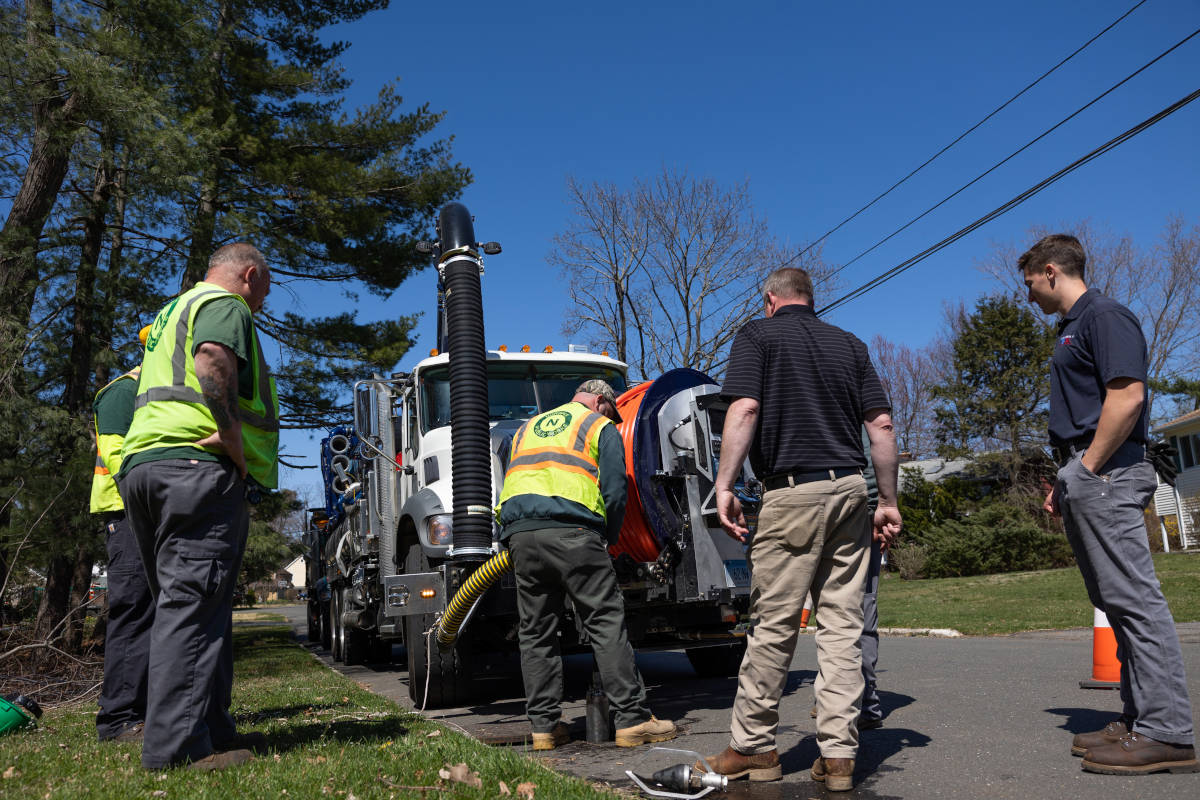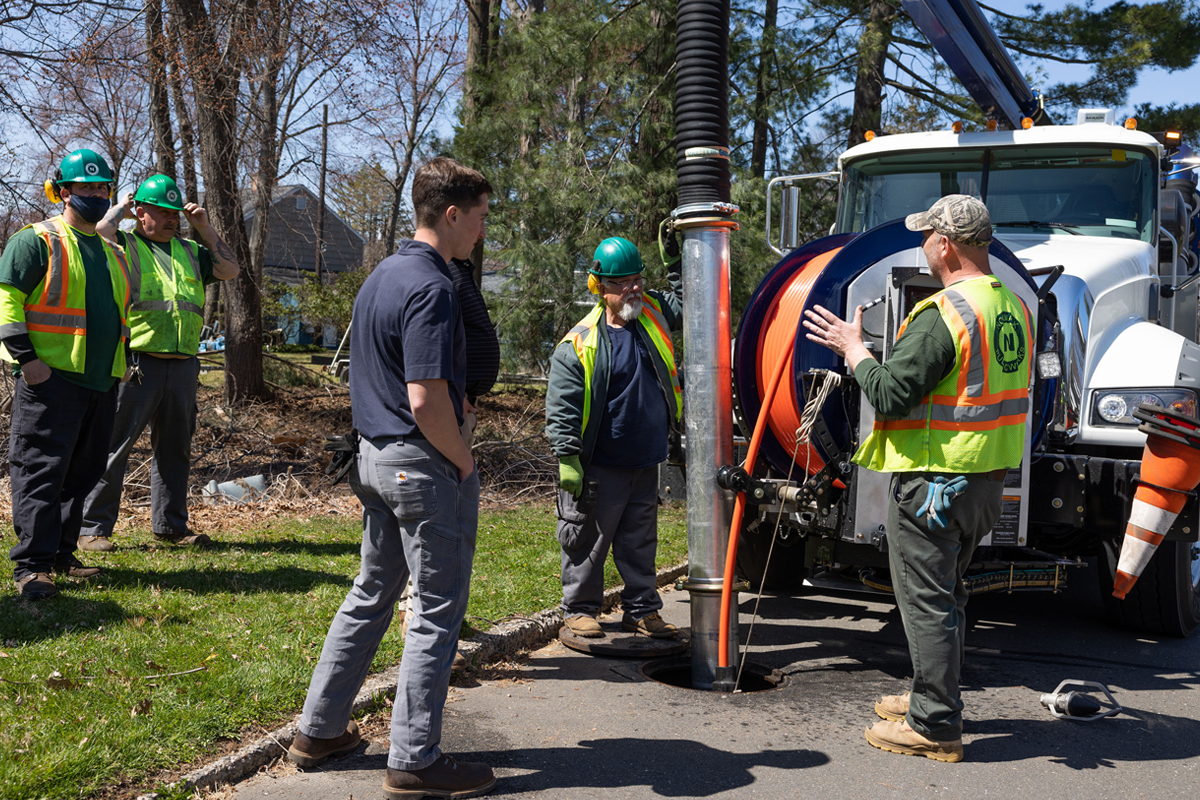Grease Is the Word

The City of Alexandria is home to an estimated 50,000 residents. Located in the central part of Louisiana on the south bank of the Red River, Alexandria has been spared over the years of the impact of Atlantic tropical storms and hurricanes, such as Hurricane Katrina in 2005, that have wreaked havoc on the coastal cities. The remnants of Hurricane Gustav roared through Alexandria in 2008, causing widespread flooding and inflow-and-infiltration (I/I) problems, especially in the low-lying areas.
“In a three-hour period, a very large amount of rain fell here,” Alexandria Wastewater Department superintendent James Graham says. “I’ve worked for the city for 22 years and there were places flooded that I’ve never seen flooded before.”
Alexandria is unique to many cities in that it owns all of its utilities — water, gas, sewer and electric. The city was incorporated in 1819, but its sewerage system dates back to the early 1900s and includes a variety of pipe materials. The system — maintained by the Alexandria Wastewater Department — consists of approximately 220 miles of 6- to 54-in. gravity mains and 2,900 manholes; it also has 87 lift stations and 20 miles of 24- to 36-in. force mains.
The Alexandria Wastewater Department serves about 55,000 customers, which includes the corporate limits of the city, as well as the 2,500 commercial and residential customers of the England Economic Development District; the system also serves three satellite systems, adding 2,000 more customers.
According to Graham, the gravity sewers are constructed of primarily vitrified clay pipe (VCP), as well as PVC, truss wall, reinforced concrete, ductile iron and polyethylene, with VCP the predominant pipe found in the system, resulting in some of the problems that the city’s Wastewater Department has had to deal with over the years — namely roots and its good friend FOGs.
Graham says that the system, though aging, has held up fairly well over the years, compared with cities similar in size and age. “Some of our vitrified clay pipe sewer lines that were constructed in the early 1900s are actually more structurally sound than those that were constructed during the 1960s,” he says. “We see a lot of joint deterioration within the system, contributed mainly to root intrusion, which is to be expected with clay pipe. Our area has numerous deposits of clay soil that likes to expand and contract with the four seasons and this contributes to most of our structural failures with the VCP.
“I don’t feel we are as bad off as some other cities. Our average daily flow is roughly 11 million gallons per day [mgd] and during a severe rain event can go to 25 mgd.”
Main Problem
While cities across the United States fight a daily battle with I/I issues, that hasn’t been the case in Alexandria. While Graham acknowledges the city deals with its own I/I issues, those aren’t the primary targets of the department’s work.
“In the past, grease has been our No. 1 issue,” Graham says. “Probably 25 to 35 percent of our trouble calls are attributed to a grease problem in the main or service line.”
Those stoppages result in various problems, such as line backups onto private property, causing liability issues, as well as property damage and health issues. And the FOG stoppages can cause long-term damage to the pipe itself.
“When it finally closes off the pipe and starts to back everything up, all of those open joints that have been suffering joint deterioration or root intrusion, causes the water to back up into all of those voids,” Graham explains. “Once the blockage is cleared, all that water comes back through the joints, bringing with it solids and other debris, causing further deterioration.”
Alexandria doesn’t have a formal pipe cleaning program in its budget, but the wastewater department does keep track of the trouble spots and addresses those problems using its jetter and vac combination units in conjunction with Jet Power II, a product supplied by Duke’s Root Control. Alexandria has two smaller Pipe Hunter jetters and a large Vac-Con vacuum combo sewer cleaning unit.
Jet Power II is a grease liquefier designed to quickly and easily eliminate grease from sewer lines. Jet Power II is non-corrosive, biodegradable, non-acidic, non-caustic and is treatment plant friendly.
To apply, crews jet-spray the Jet Power II solution upstream from the affected pipe. The treatment requires only 10 to 15 minutes to liquefy grease, allowing crews to quickly move onto jet spraying and retrieval. The hose can be stopped at the upstream manhole, at which point the water pressure is turned off. Roughly 10 minutes later, the grease will be homogenized. The liquid grease washes downstream and will not re-coagulate, leaving most pipes virtually free of grease.
“Jet Power II is an emulsifying agent that you apply with an ejector unit that can be attached to all three of our cleaning units,” Graham says. “It’s preventative maintenance. We use it once a month or every other month on line segments we have identified as trouble spots.
“We’ve used [Jet Power II] for eight years and it has made a significant difference in the number of trouble calls for blockages related to grease. I would say those calls have dropped by about 40 percent [during that time].”
While both FOGs and root intrusion individually create a wide range of problems, Graham says together they are a complete wrecking crew, actually making FOG a far worse headache to deal with and control. “With roots, once they get into the joints of your main lines, the grease actually has something else to hold onto other than the walls of your pipe,” he says. “Roots actually slow down the flow of the sewer line, which gives the grease more time to adhere to the side of the pipe. They are like a tag team — the roots and grease help each other cause havoc in the mainlines.”
Graham says the department tries to stay on a pipe cleaning schedule, using the jetters and vac unit to clean the city’s pipes. The department also uses video to inspect its lines on an as-needed basis, uses its CUES truck and CCTV unit.
“We use our Vac-Con combination unit to do most of our schedule maintenance. As our units respond to a call, we log them and from this, work orders are produced to go back to do a complete cleaning and degreasing of that particular segment of line,” he says. “Some areas are treated and cleaned more often as the demand requires.”
Graham has been in the sewer business for 30 years, the last 22 with the City of Alexandria, and he has seen a more pronounced effort in recent years by municipalities to get control of their FOG issues. He says his department has a pre-treatment program and surveys restaurants to find out how they handle their grease and if they use grease traps, etc. “We’ve ID’d areas, whether a row of restaurants or just one, and have set up limits for fats, oils and grease. Twenty years ago, we didn’t do anything with the restaurants and this has made a significant impact on the grease problem that we had been experiencing.”
Sharon M. Bueno is managing editor of Trenchless Technology.




